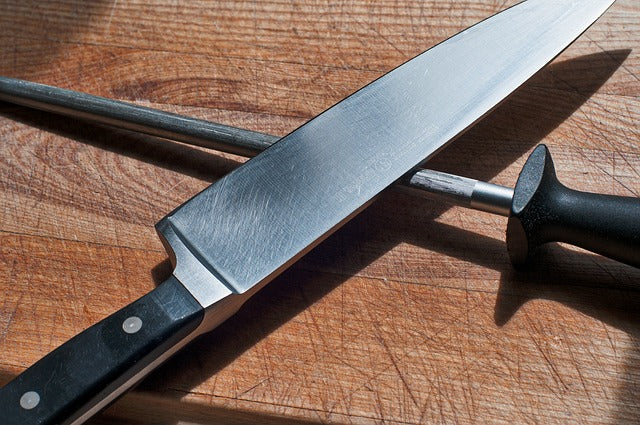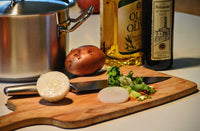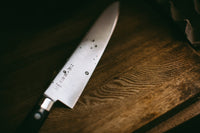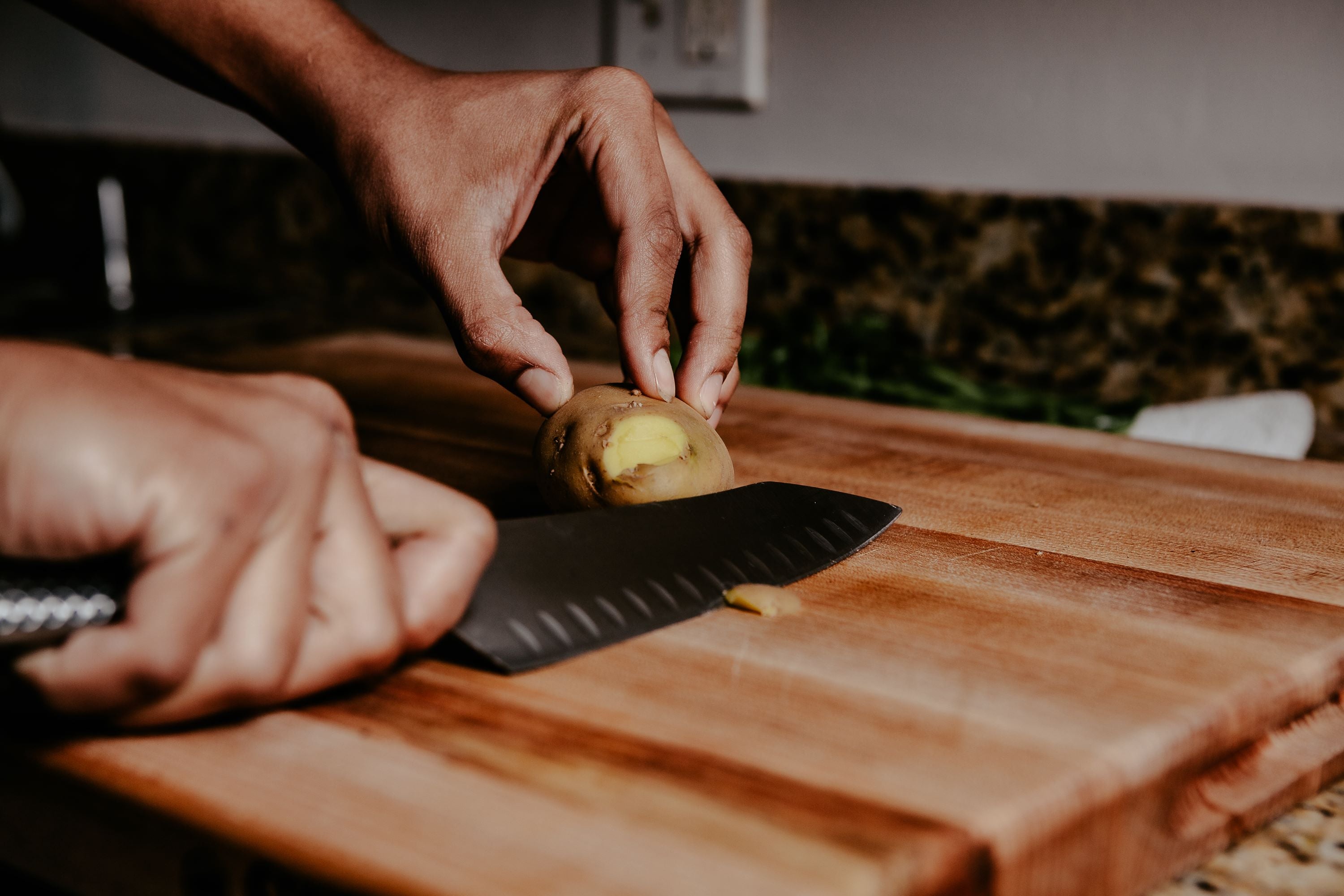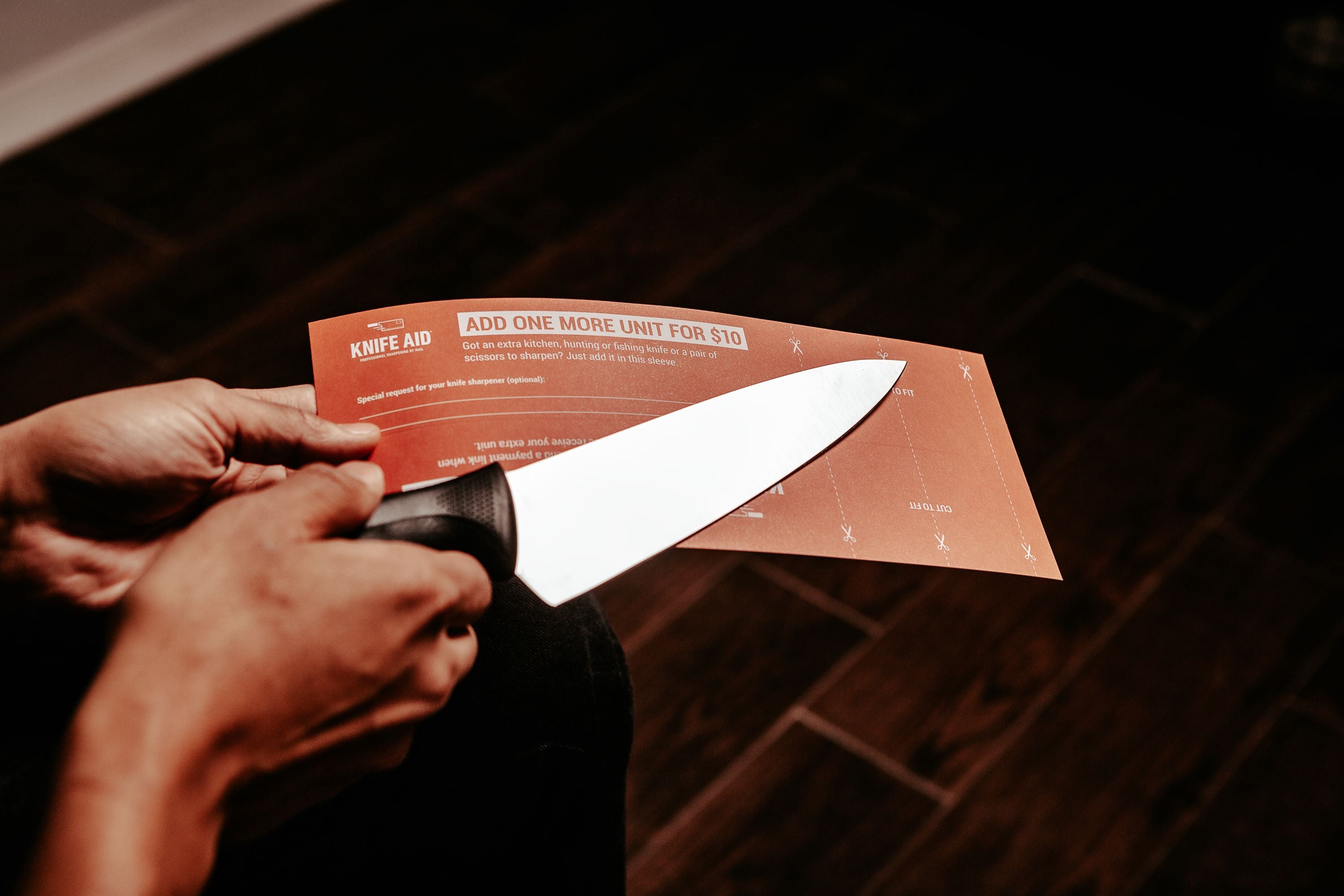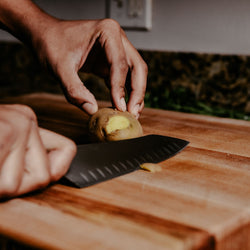How To Use A Honing Steel
Why you should use a honing steel
A honing steel (or rod) will help keep your knives sharp and well aligned in between professional sharpening treatments. Honing doesn’t replace professional sharpening - but it will prolong the sharpness of the cutting edge on your knives.
Using A Honing Steel In 3 Easy Steps
Professional chefs recommend using a honing steel every time you are going to use a knife. If you are confident, you can hone your knives freehand. It looks a bit more fancy and dramatic but works just as well as going the cautious route of using a non-slip surface to support your honing steel. We prefer using the method the folks at Serious Eats recommend. Using this method is easy, and you will be less likely to injure yourself.- Most first-timers find the vertical grip to be easiest. Place the steel perpendicular onto a non-slip surface. Hold the handle of the steel and plant the tip into your cutting board. Place the heel of the knife against the top of the steel at an approximate 15-20 degree angle.
- Applying only light pressure, draw the knife down the steel, using the full length of the steel, and pulling across the full length of the knife, maintaining a constant angle. Begin the second side. Hold the heel of the knife against the other side of the steel, again at a 15-20 degree angle.
- Drag the knife blade across the steel until the tip of the knife and the tip of the steel meet. Repeat with both sides until the blade is honed—usually about 8 strokes per side. Unsure about the correct angle for your knife? Read more about knife angles.
Japanese Knives And Honing Steels
A note on Japanese knives: due to their harder and thinner blade, a honing steel can damage your knife! Use a ceramic honing rod or a leather honing strop belt to hone your knife. And if in doubt, ask the manufacturer for advice.
Watch our video on how to hone a knife:
